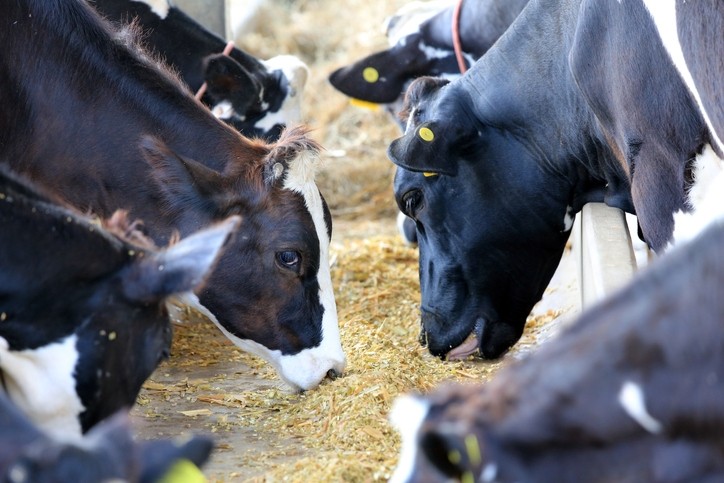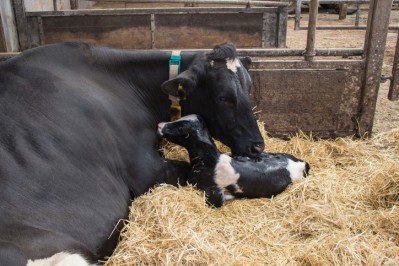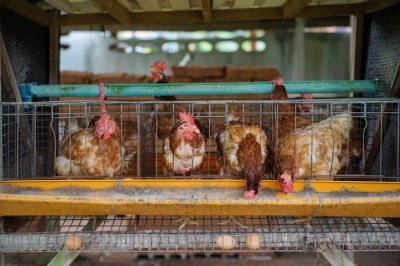Dairy cows on canola meal diets may outperform those on soybean meal

Canola has been an important and inexpensive feed ingredient for dairy producers in California for several years said Peter Robinson, lead researcher and cooperative extension specialist in dairy nutrition, University of California, Davis.
The feed ingredient was more economical than soybean meal. However, recently the price of soybean meal has been dropping, which is increasing interest in using the protein.
“Some of the buyers from the big dairies they were seeing the price [of canola meal] becoming less advantageous and we ... are seeing soybean meal in the market here,” he told us.
Soybean meal, “is sort of a new feedstuff – we haven’t used it for a long period of time so the collective memory isn’t there.”
There also has been little work done examining the use of soybean meal in dairy cow diets with the range of feed ingredients used in California or in a ration including DDGS, he said.
The potential for use of soybean meal in diets prompted a feeding studying comparing the use of canola meal and soybean meal (SBM), he said.
The research team published details about the project in the journal, Animal Feed Science and Technology.
The goal of the project was to develop diets with increasing levels of SBM as a replacement for canola meal and including DDGS and to assess cow body condition score (BCS), whole tract apparent digestibility, rumen microbial crude protein (MCP) outflow, dry matter intake and plasma amino acid (AA) levels, the researchers said in the paper.
Looking at diets with differing levels of soybean meal, the researchers found that milk production and component yields were reduced for cows receiving diets with the largest amounts of soybean meal, and body conditions cores fell when SBM was added to the feeds.
However, the apparent digestibility of neutral detergent fiber (aNDF), organic matter and crude protein improved when a small amount of SBM was added to the diet along with canola meal, they said.
Plasma amino acids stayed within normal ranges, but methionine concentrations fell 20% as more SBM was added to the feeds.
The drop in performance for cows on the high soybean meal diet is thought to be linked to a reduction in methionine as an element of the metabolized amino acids and may have established a methionine limitation, they said.
Why evaluate soybean meal in dairy rations?
Canola meal and DDGS are common protein ingredients in dairy feeds in the western US, the researchers said. There have been questions regarding the best ways to combine canola meal (CM) and soybean meal.
Past research often swapped the two meals on a one to one basis by weight of crude protein (CP), they said.
These studies tended to find similar or higher dry matter intake and milk protein and milk yields from cows receiving a CM-based diet.
However, the research does not completely explain why CM appears to have a higher nutritional value, and the diets in those studies tend to include ingredients not commonly used in the US, which may be a factor, they said.
Also, little work has been done looking at the blending of CM, SBM and DDGS.
Dairy herds in California are flexible in ingredient use, said Robinson. Cost of ration ingredients plays an important role in diet formulation.
“Diets out here may have 15-16 ingredients,” he added. “We use all kinds of weird stuff.”
Improving the understanding of the interaction of the different protein ingredients could provide beneficial information to producers regarding “optimal diet inclusion,” the researchers said.
Canola market interest
There also was an interest in comparing the use of the two protein meals for canola producers, said Brittney Dyck, senior manager of canola utilization with the Canola Council of Canada.
The US is the primary market for Canadian canola meal and California dairy producers are a top market in the states, she said.
“The focus of the research is to help the industry best use the product [and] answer the questions that the feed industry has,” she added.
The organization often supports research into feed ingredient use and ingredient comparison trials to better understand ideal feed ingredient combinations, she said.
“Soybean meal had not been a popular protein meal, but prices were making it of interest and the question was there."
Feeding trial details
In the feeding trial, about 630 early lactation cows were given one of three diets for a period of 21 days before being shifted to another of the trial diets, the researchers said.
The initial 17 days of each feeding period were an adaption period and samples were collected during the remaining four days.
The diets included a control canola meal and DDGS diet (0 SBM) and a diet with 70g/kg soybean meal along with DDGS and 35g/kg CM (70 SBM), they said. A third diet (35 SBM) was generated by mixing the first two diets.
Samples were taken on days 16 and 19 of feed ingredients and the total mixed ration, they said. Blood, fecal and urine samples were collected on day 20 for analysis.
Milk samples were gathered from all cows on day 21 of the feeding period, the researchers said. BCS was recorded at the start of the study and on day 21 of each period.
Results and remaining questions
Overall, cows receiving the high SBM diet had the lowest milk, fat, true protein (TP) and lactose yields, however, cows on the 35 SBM diet had the lowest proportions of TP and lactose in milk, the researchers said. Body conditions scores fell as more SBM was added to the diet.
The diet with the smaller amount of soybean meal had a much less negative response, said Robinson. However, cows did change from gaining weight to losing weight.
“That’s something that producers picked up and when we went to the high level [of soybean meal] … fat and protein both dropped quite a bit, so this was a negative result,” he said.
Dry matter intake and conversion of dietary nitrogen to milk nitrogen were similar for cows on all diets, but aNDF, organic matter and CP digestibility were highest for the 35 SBM feed, the researchers said.
Amounts of threonine, methionine, histidine, valine and arginine were largest for the 35 SBM diet, but the ratio of methionine to the total essential AA (other than methionine) fell as SBM was added to the diet.
The levels of methionine in plasma dropped below what was anticipated, said Robinson.
Although some drop in cow performance was anticipated, there were surprises in the data as well, he said.
"We expected to see a reduction in performance when we went to the higher level of soybean meal but not as high as it was,” he added.
There also tended to be an unanticipated drop in the microbial crude protein outflow, he said.
“All the models suggest as you add more SBM at the expense of canola was you’d get an increase, but it was a decrease.”
“It wasn’t huge, but it was a big surprise,” he said. “I didn’t think we [would] see any decline in the outflow.”
A follow-up study comparing some of the diets and the use of rumen-protected methionine is currently being completed, said Robinson.
Source: Animal Feed Science and Technology
Title: Impacts of incremental substitution of soybean meal for canola meal in lactating dairy cow diets containing a constant base level of corn-derived dried distillers’ grains with solubles
Authors: H. Gauthier, N. Swanepoel, P. Robinson
DOI: published online before print https://doi.org/10.1016/j.anifeedsci.2019.04.007








